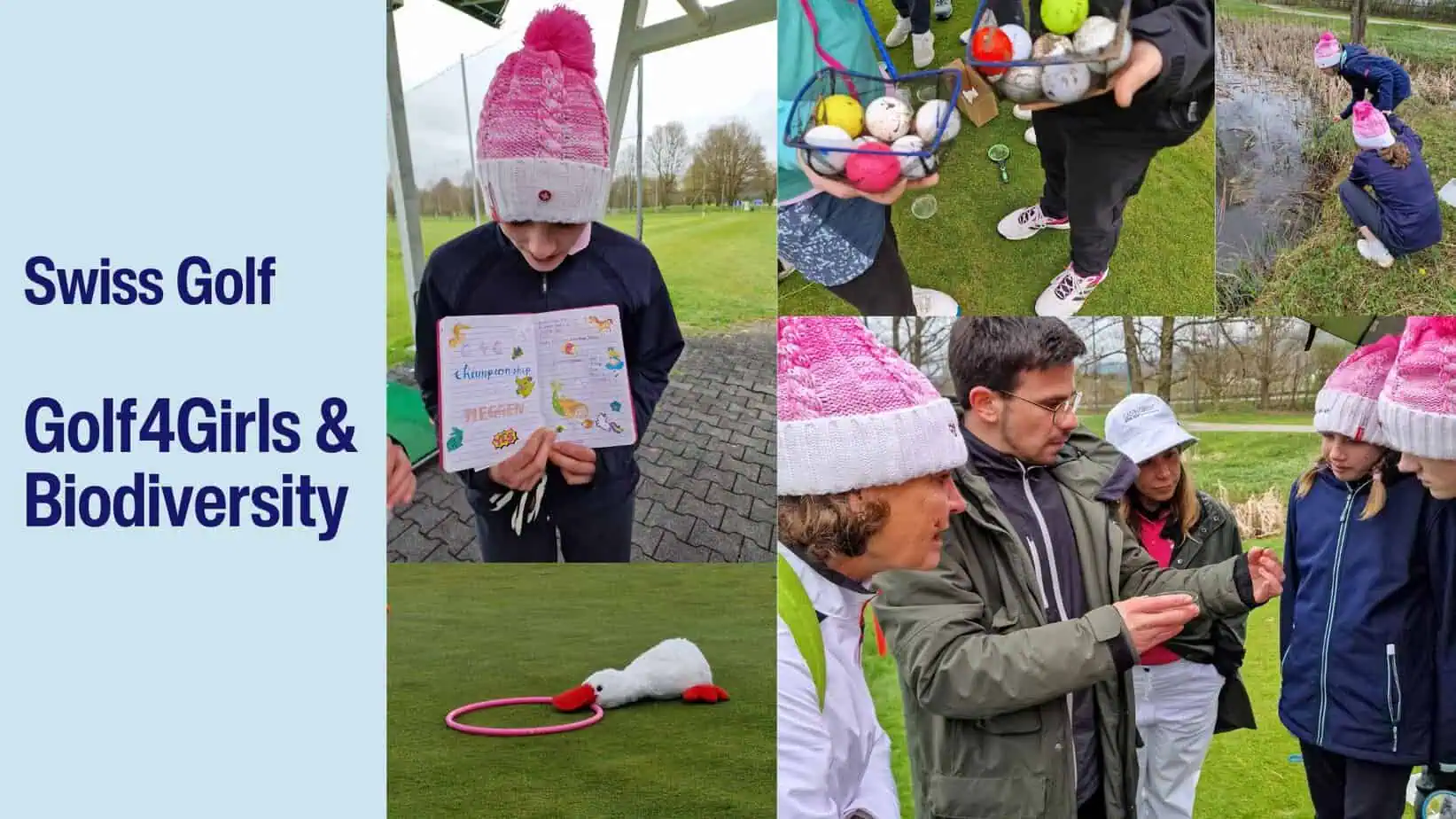Swiss Golf also launches environmental education at Golf4Girls
What’s floating there, apart from a few old golf balls of course? “Frogspawn,” says Linda with a connoisseur’s look at the flabby structure lying in the grass next to a small pond on the Swiss Golf Bubikon golf course. The young Swiss girls, who are taking part in a Golf4Girls Day organized by Swiss Golf on this day in March, used small landing nets to examine the shallow water zone. Then the fished material ends up in small plastic containers and is examined with a magnifying glass. The shell of a pupa emerges, pond larvae wriggle through the water.
Integrating biodiversity as a topic everywhere
The oohs and aahs from the young golfers are great. Andrea Lorefice, biologist and currently an intern in Swiss Golf’s sustainability department, briefly explains how the pond’s inhabitants are developing. The group listens, at just under five degrees and in constant rain. This is not really a day for golfing, and not really a day to take the opportunity to familiarize yourself with the topic of biodiversity. But the four young Swiss teenagers are just as tough and enthusiastic as their two coaches.
Swiss Golf is integrating the topic of biodiversity into youth golf for the first time in 2024. “We searched intensively for an opportunity and are now present at 16 events in 2024,” explains Alicia Moulin, Sustainability Manager at Swiss Golf, with satisfaction. Andrea Lorifice, like his colleague Samuel Silberer, will therefore be making the topic tangible at junior events in Switzerland. “Many golfers are not so aware of the biodiversity crisis,” is Lorefice’s first report after his first few months on the job. “We want to close this gap.”
Formulating goals is one thing when it comes to sustainability. Turning this into reality is usually the far more difficult and often more expensive project because it requires personnel, time, commitment and a fundamental interest on the part of the target group.
“Respect for nature is very important to us,” explains Claudia Wörrle-Krakau, who has been responsible for junior development at Swiss Golf in recent years and welcomes the integration of the biodiversity area. Sport and environmental education go well together, she believes, “even if it wasn’t an issue for the clubs in the past.” But times are changing. “We want to give the children the overall picture of golf and that includes understanding the natural environment in which you play.”
The right approach brings success in Switzerland. The event is also tailored to girls in every detail. It starts with the matching sticker for the face, continues with the pink T-shirt and ends with the Golf4Girls notebook. The latter are full of drawings, posts and notes from all the golfing experiences at Golf4GirlsDays. There is even a matching flag on the putting green and on this day, putting takes place between a few stuffed animals. The trainer duo also turn on the loudspeaker and dance a round with the girls to the specially composed Golf4Girls Day song.
Finding the right framework for integrating the topic of biodiversity is not that easy, as Alicia Moulin knows. However, Swiss Golf’s main focus is on the topic of biodiversity and aims to integrate the topic into all areas of golf. With a certification rate of over 70 percent of golf courses in the GEO program, Switzerland is the golf nation with the highest level of commitment to an environmental program in Europe.
At the National Junior Captains Meeting in Magglingen, the clubs’ youth captains were introduced to the topic of biodiversity. According to Moulin, this is ultimately also about basic issues. What does a species-rich water hazard look like compared to a species-poor pond, for example? A question that should now be easy for the U-12 juniors after their Golf4Girls Day in Bubikon. Anyone who has ever been out and about with a landing net at the edge of the bank knows that: There is much more to fishing here than just the old golf balls.







